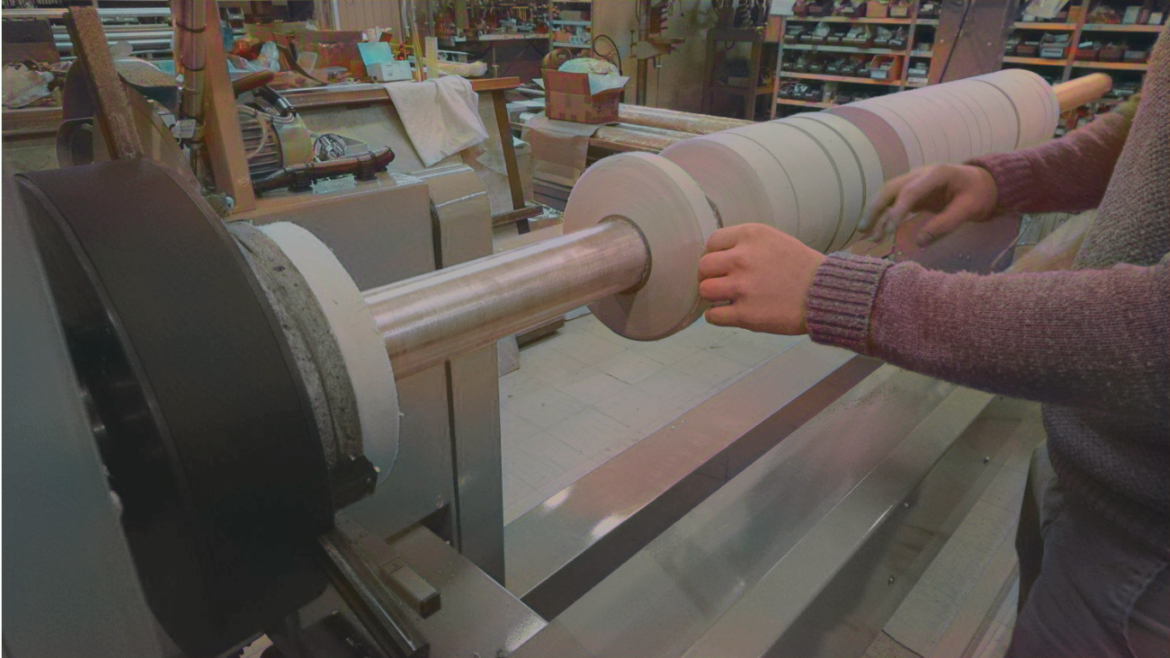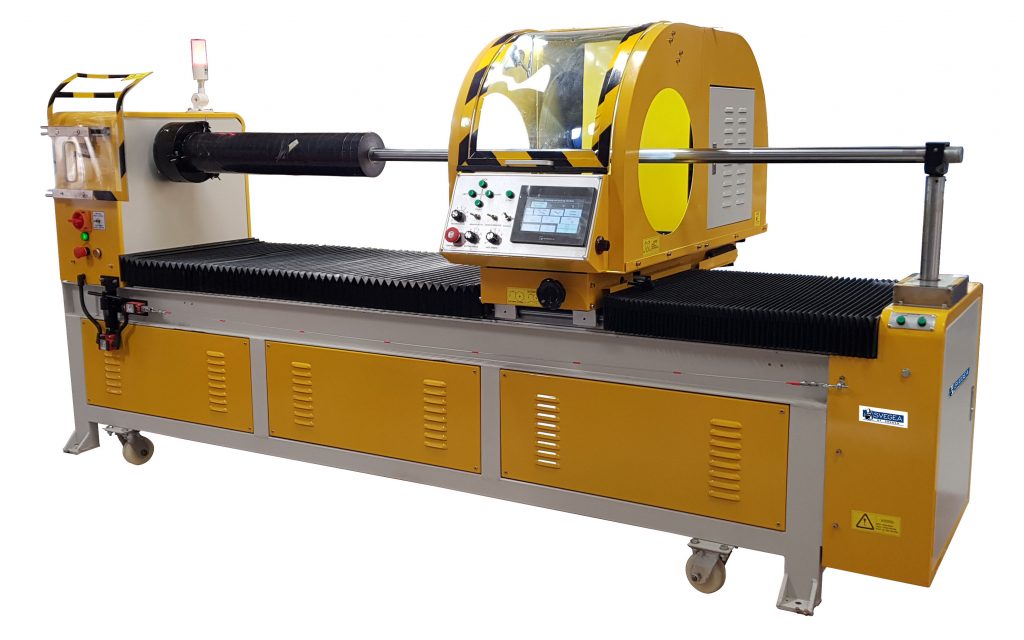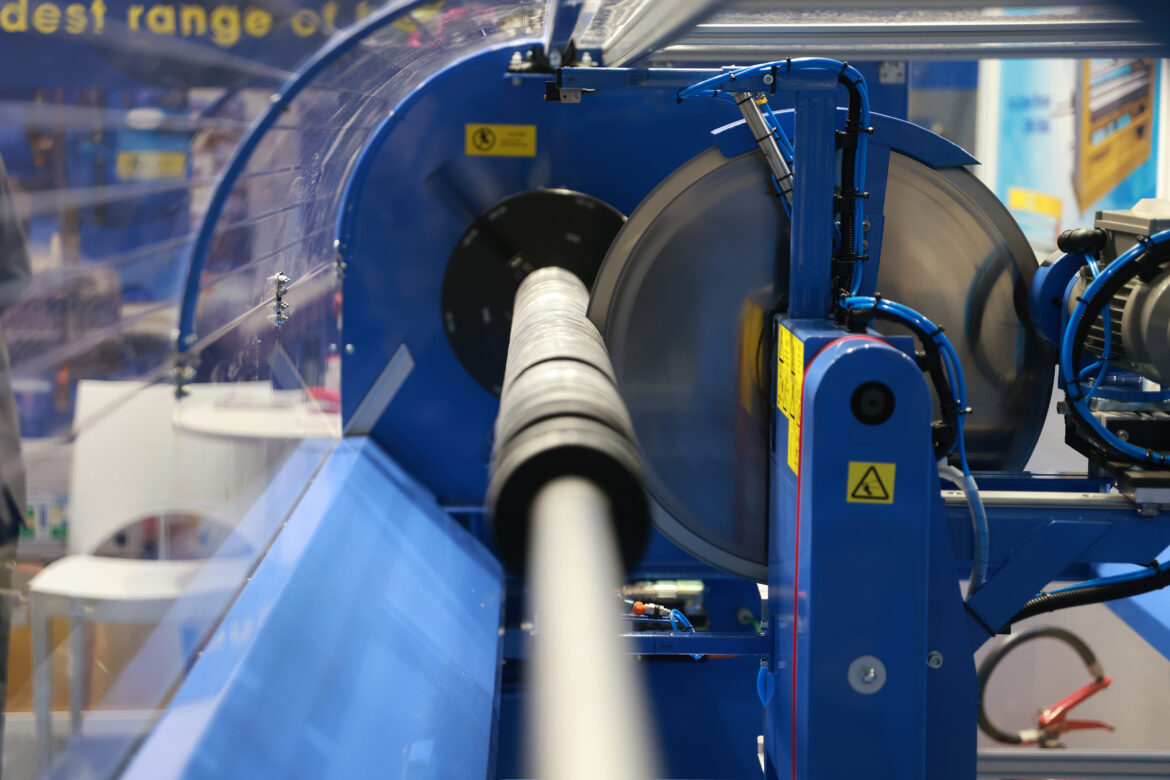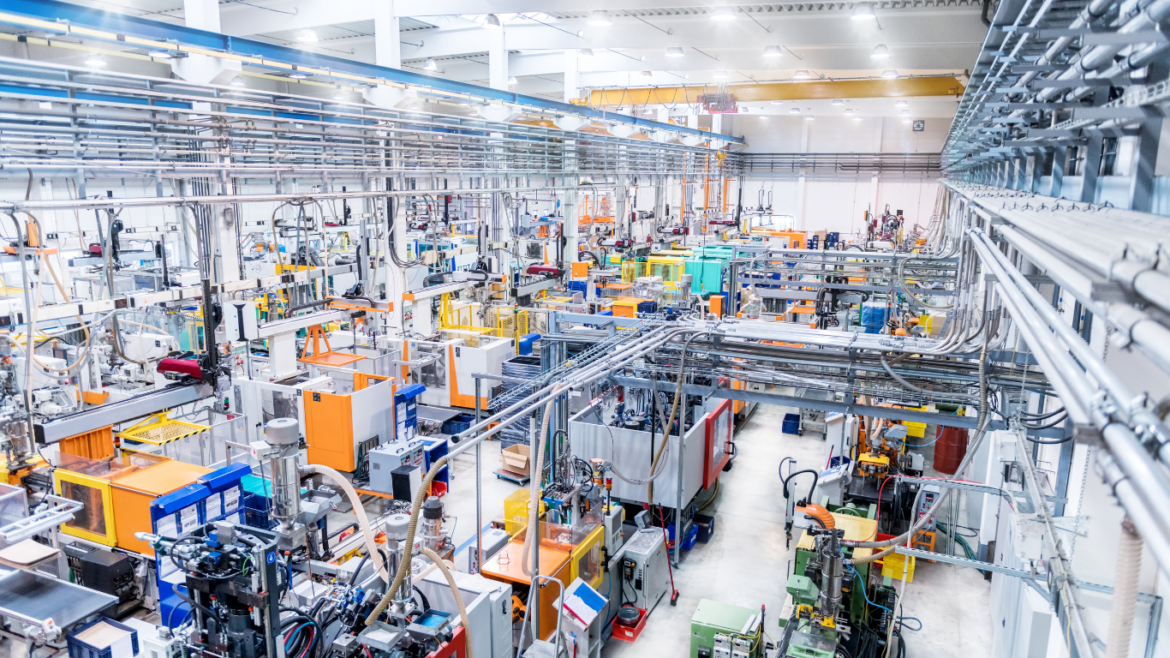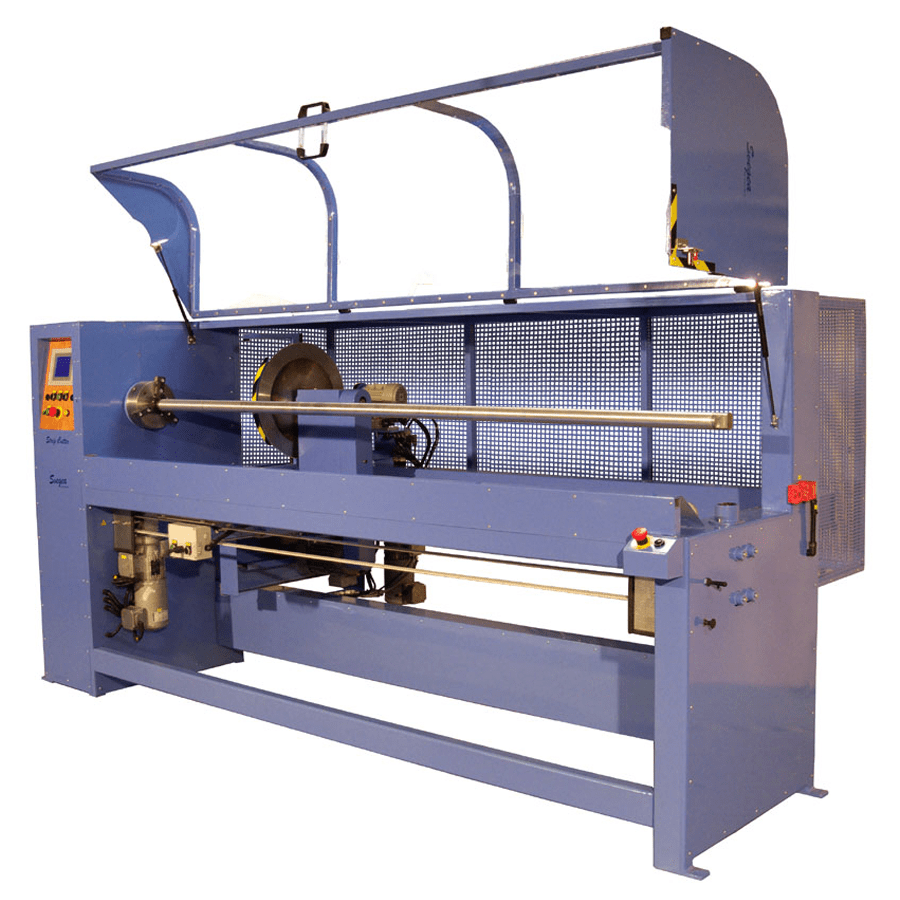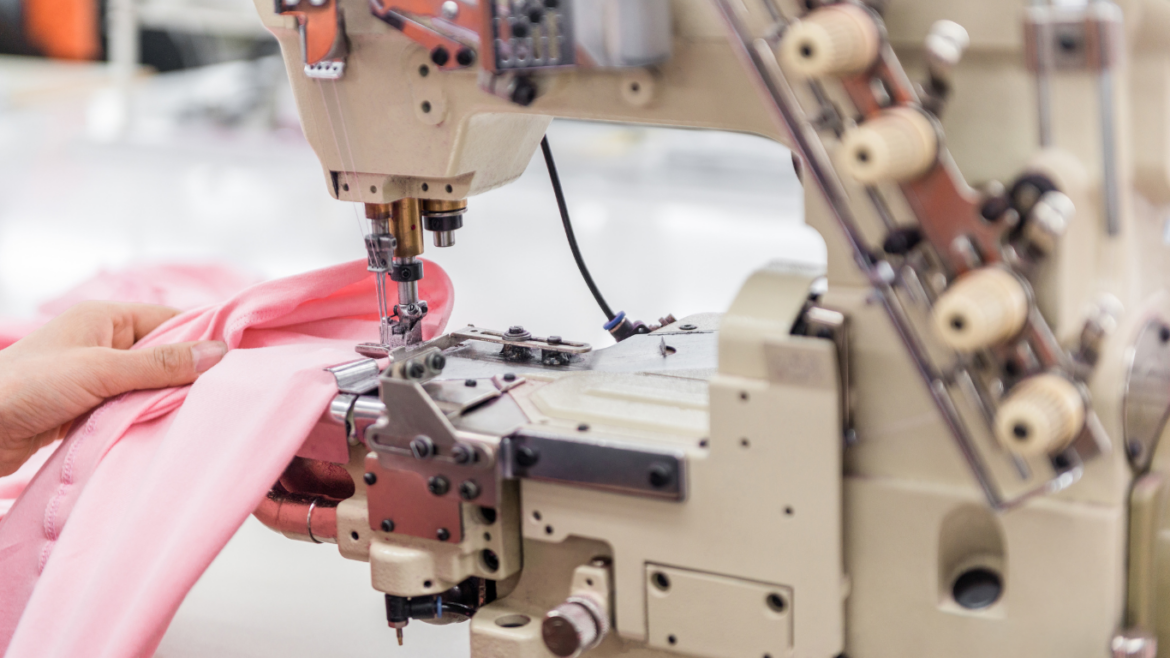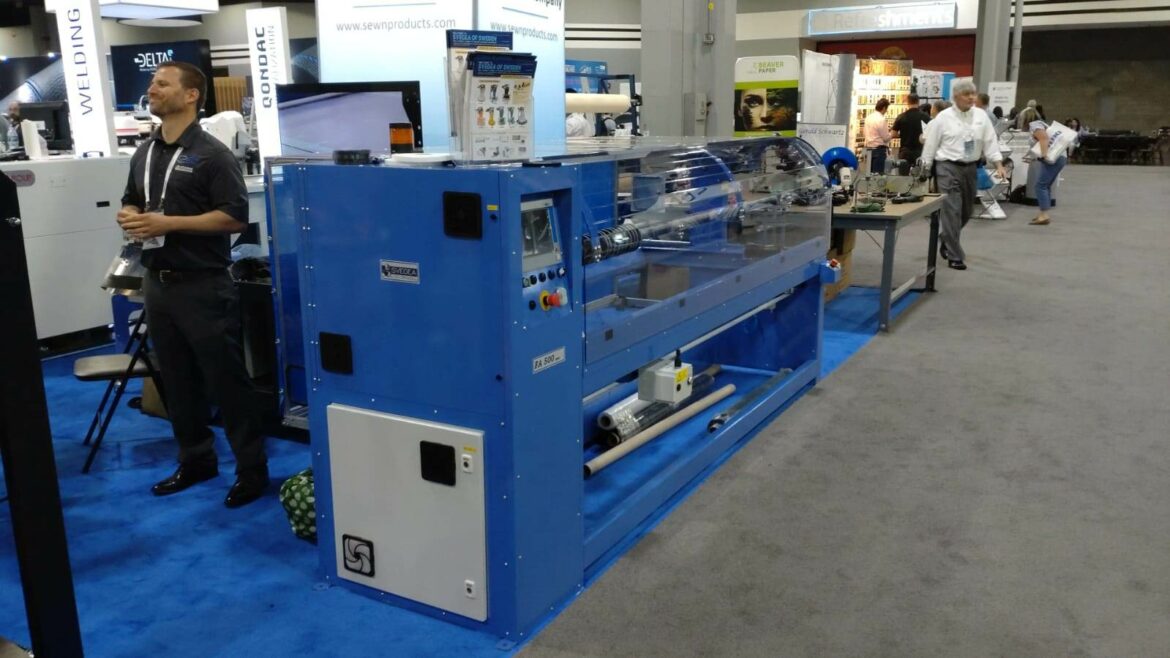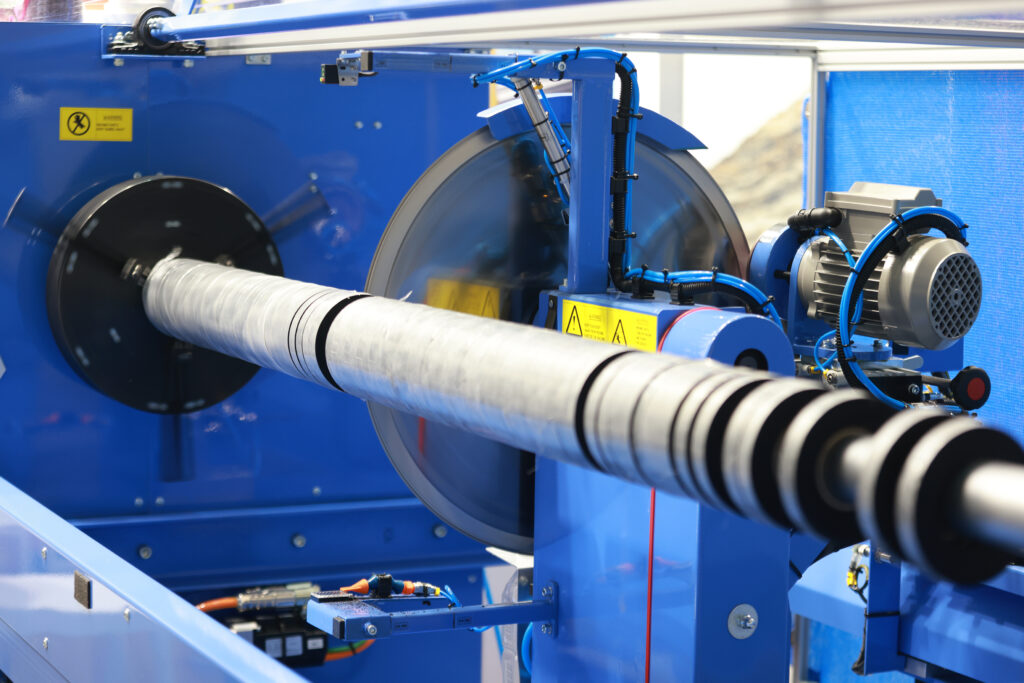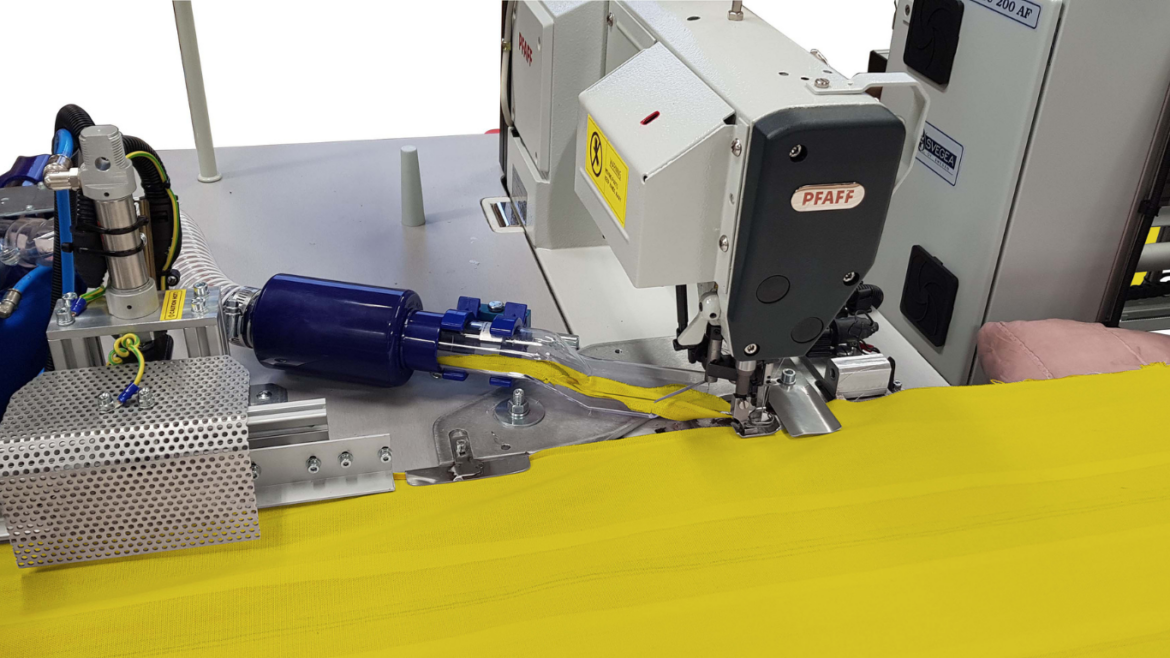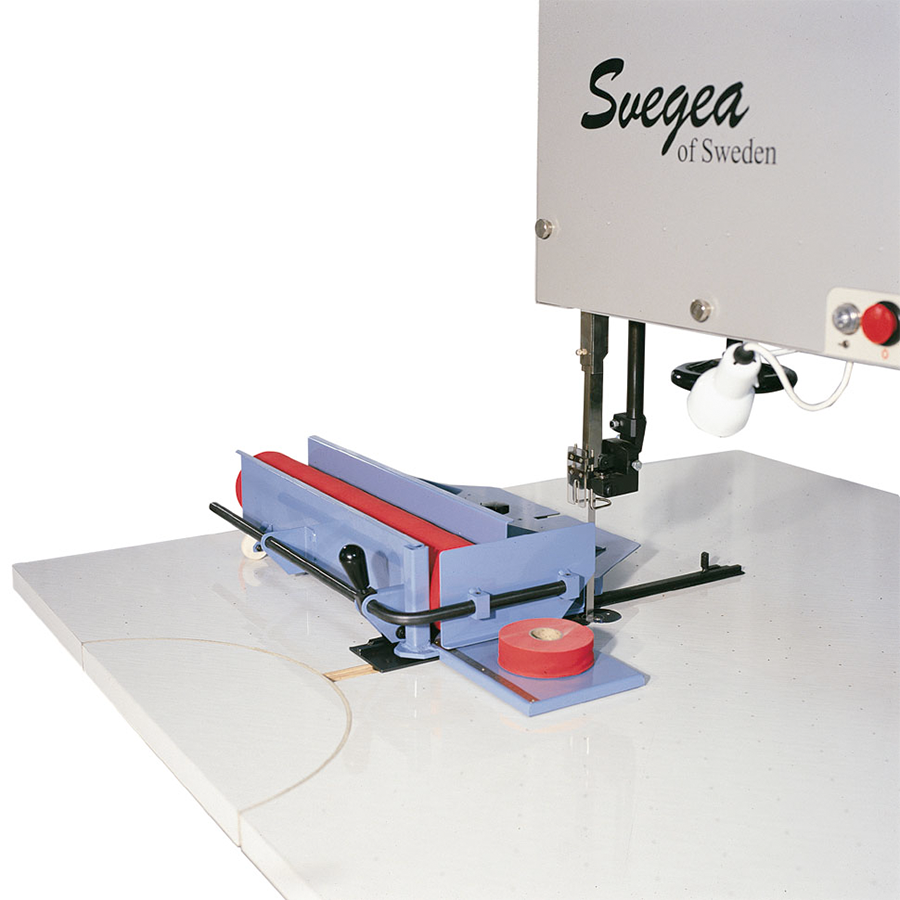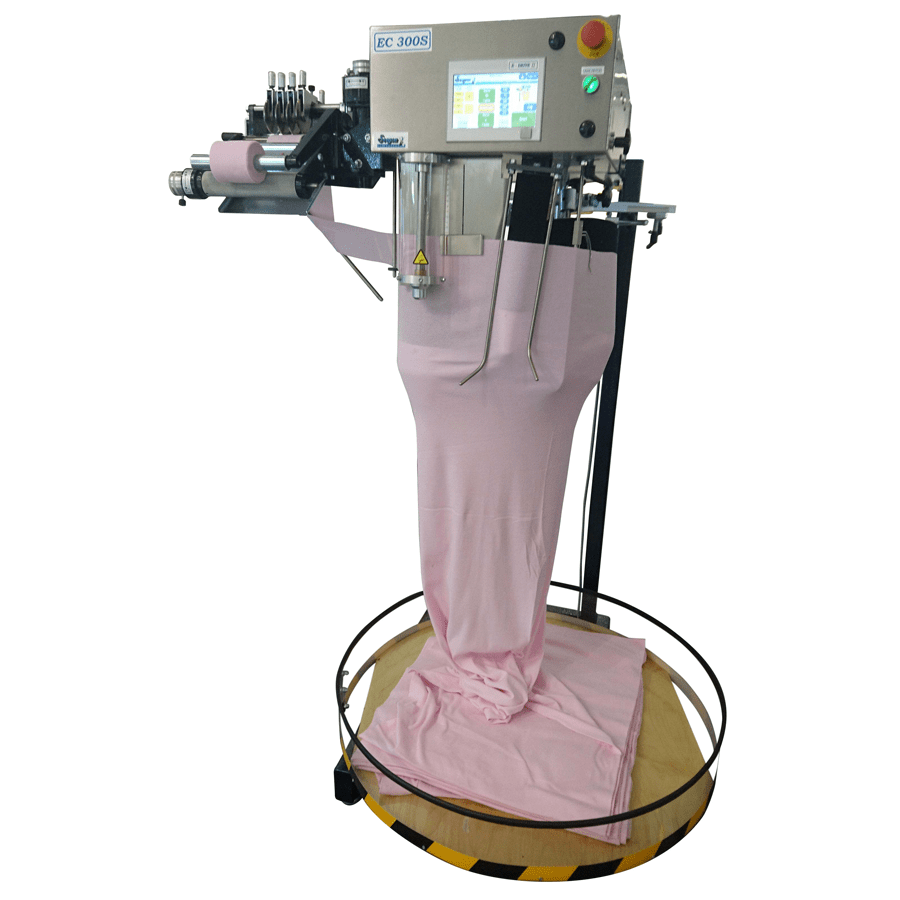The fashion revolution isn’t just a trend—it’s a full-blown transformation. It’s bold, it’s beautiful, and it’s reshaping everything from haute couture to humble factory floors. Circular fashion, once a niche concept whispered among eco-warriors, is now the heartbeat of the industry. And guess what? It’s not just designers and influencers leading the charge. Garment and textile manufacturers are stepping into the spotlight, armed with smart machines and sustainable strategies.
Circular Fashion: More Than Just a Buzzword
Let’s be real. Fashion has always been about reinvention. But the fashion revolution is different. It’s not about chasing the next look; it’s about changing the way we make, wear, and reuse clothing. Circular fashion means designing garments that last longer, can be repaired, recycled, or repurposed, and don’t end up as landfill clutter.
Consumers are loving it. From thrifted treasures to biodegradable sneakers, they’re choosing pieces that tell a story—and respect the planet. But behind every conscious choice is a manufacturer making it possible.
The Factory Floor Joins the Revolution
Here’s where things get exciting. The fashion revolution isn’t just happening on runways or in retail. It’s happening in factories, where smart technology is turning sustainability into profitability.
Modern fabric inspection systems now detect flaws before cutting begins, reducing waste and improving quality. Automated cutting machines use AI to map out the most efficient layouts, saving material and time. These innovations aren’t just cool—they’re crucial.
According to the Stockholm Resilience Centre, circular fashion models are key to reducing environmental impact and building resilient supply chains. And manufacturers who embrace these models are seeing real results.
Fashion Revolution = ROI Revolution
Let’s talk numbers. The fashion revolution isn’t just good for the Earth—it’s good for business.
By optimizing material use with smart inspection and cutting tech, manufacturers reduce fabric waste, lower production costs, and increase output. That means better margins and faster turnaround. Plus, sustainable practices attract eco-conscious brands and consumers, boosting demand and loyalty.
A study published by MDPI found that circular economy strategies like reuse, recycling, and reduction are not only environmentally beneficial—they’re economically viable. In other words, sustainability sells.
From Catwalk to Cutting Table
Designers may sketch the vision, but manufacturers bring it to life. The fashion revolution depends on this partnership.
Imagine a designer creating a zero-waste collection. To make it real, the factory needs machines that can handle unconventional fabrics, cut with precision, and minimize leftovers. That’s where innovation meets execution.
Why Manufacturers Should Care
Still wondering if the fashion revolution is worth the investment? Let’s break it down:
- Relevance: Brands are demanding sustainable production. If you can’t deliver, they’ll find someone who can.
- Efficiency: Smart machines reduce waste, save time, and improve consistency.
- Compliance: Regulations around textile waste are tightening. Circular practices help you stay compliant.
- Growth: Eco-conscious consumers are driving demand. Be ready to scale sustainably.
This isn’t just a movement—it’s a market shift. And manufacturers who adapt will thrive.
The Future Is Circular—and Smart
Circular fashion is here to stay. And the fashion revolution is only getting stronger. From recycled fibers to AI-powered cutting tables, the tools are ready. The demand is real. And the opportunity is massive.
If you’re a garment or textile manufacturer, now is the time to act. Don’t just watch the revolution—join it.
“The fashion revolution is not just about what we wear—it’s about how we make it. At Svegea, we’re committed to helping garment and textile manufacturers stay ahead by innovating our machinery to support circular fashion models. Sustainability and profitability can go hand in hand.” — Hakan Steene, Managing Director, Svegea of Sweden
Contact Hakan Steene at h.steene@svegea.se to explore Svegea’s innovative textile machinery. These sustainable solutions are designed to help your company stay relevant, reduce waste, and boost ROI in the age of the fashion revolution.
In the competitive garment and textile manufacturing world, efficiency and precision are paramount. Svegea of Sweden, a leader in textile machinery, offers cutting-edge solutions that transform production processes, ensuring higher ROI and safer operations.
Efficiency Meets Innovation
Svegea’s machines are designed to streamline operations and reduce waste. The EC300, known for its precision, ensures consistent quality and faster production times. The Tube Sewing Unit 200A simplifies the creation of bias binding by sewing open fabric into continuous tubular pieces. This innovation minimizes operator assistance while maintaining high productivity.
Adding to their achievements, Svegea received the prestigious New Technology Innovation Award at Texprocess 2023, recognizing the innovative and sustainable design of their textile machinery. Their solutions, such as the award-winning EC-450XF Collarette Cutting System, set benchmarks for precision, efficiency, and eco-friendly manufacturing practices. 
Versatility in Production
Svegea’s Bias-Cutting Systems are ideal for slitting, sewing, and rolling bias-cut fabrics. These systems handle various fabric types, ensuring strong and stretchable materials for diverse applications. Roll Slitting Machines, such as the FA600, offer fully automated solutions for cutting materials like PVC, polyester, and non-wovens.
Customized Solutions for Your Unique Needs
Every garment manufacturer has unique production requirements, and Svegea understands that one size doesn’t fit all. Their ability to customize textile machines to suit your specific needs ensures smarter, more efficient operations. Whether it’s tailoring machinery to fit fabric types, production volumes, or unique manufacturing goals, Svegea provides solutions that seamlessly integrate into your existing workflows. This flexibility makes their machines a smart investment for companies looking to maximize efficiency and adaptability.
Safety and Sustainability
Modern textile machinery prioritizes operator safety and environmental sustainability. Svegea’s machines incorporate intelligent sensors and energy-efficient designs, reducing workplace hazards and supporting eco-friendly practices.
Why Invest in Textile Machinery?
Acquiring advanced machinery is not just an expense—it’s a strategic investment. Svegea’s equipment enhances production efficiency, reduces operational costs, and boosts workforce productivity. With minimal maintenance and optimized resource utilization, these machines guarantee a robust ROI.
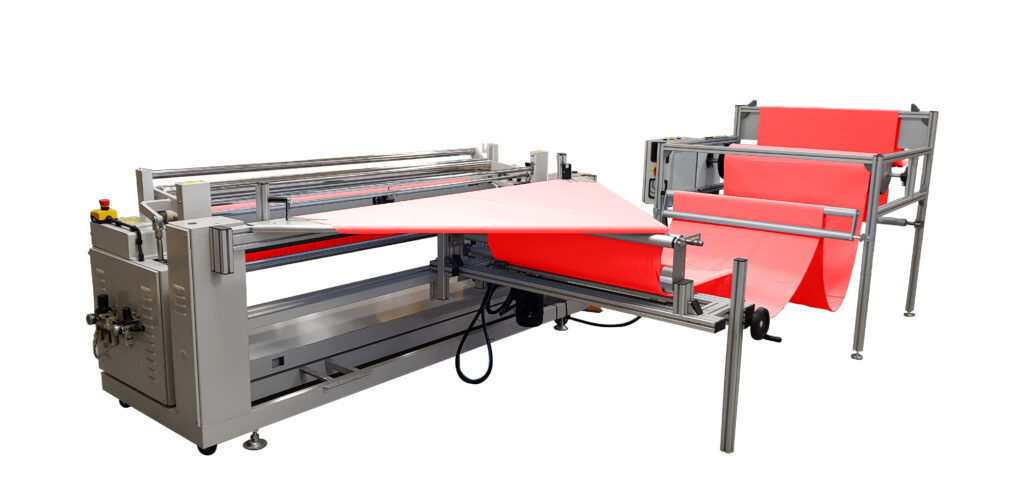 Explore Svegea’s Best-Selling Machines
Explore Svegea’s Best-Selling Machines
Svegea’s portfolio includes:
- Collarette Cutters: Precision-driven textile cutting
- Tube Sewing Unit 200A: Seamless bias binding creation
- Bias Cutting Systems: High-speed slitting and rolling
- Roll Slitting Machines: Automated material cutting
Take the Next Step
Ready to elevate your textile manufacturing? Contact Håkan Steene (h.steene@svegea.se) today for a product demo and discover how Svegea’s innovative machinery can revolutionize your operations.
For more details, visit www.svegea.se.
In the ever-evolving world of fashion, trends dictate what consumers wear and drive substantial changes in the textile manufacturing industry. As styles and preferences shift with each season, so does the demand for specific fabrics and production techniques. Understanding this dynamic interplay between fashion and textile manufacturing sheds light on why agility and innovation are critical for industry players.
The Influence of Fashion Trends on Textile Choices
Fashion trends, often birthed on global runways, have a profound impact on the types of fabrics that manufacturers produce. For example, the rising demand for eco-conscious clothing has propelled the use of organic cotton, recycled polyester, and other sustainable materials. Consumers are becoming increasingly discerning, and their demand for environmentally friendly products directly affects the supply chain.
Moreover, certain styles influence fabric preferences. For instance, the resurgence of Y2K fashion has led to increased production of shiny, stretchy fabrics like spandex and laminated textiles. On the other hand, minimalism has sparked a preference for clean, soft fabrics such as linens and organic blends.
Svegea of Sweden exemplifies innovation in this space. By offering state-of-the-art slitting machines and tubular fabric slitters, Svegea empowers textile manufacturers to adapt to these shifts effectively. These technologies streamline production processes, enabling manufacturers to work seamlessly with both traditional and modern fabrics.
Adapting to Seasonal Patterns
Seasonality is another major driver of demand in textile manufacturing. The winter months see a surge in production of wool, fleece, and thermal fabrics, while spring and summer collections demand lightweight materials like cotton and chiffon. Transitioning between these seasonal demands requires adaptability in both sourcing and production techniques.
Evolving Production Techniques to Meet Trends
As fashion becomes more experimental, production techniques have also evolved. Digital printing, for instance, has revolutionized textile manufacturing by allowing vibrant, custom patterns to be applied directly to fabrics. This method is widely used for fast fashion, where speed and creativity are paramount.
Similarly, advancements in dyeing technology have paved the way for more sustainable practices. Waterless dyeing, for example, is gaining traction as brands seek to reduce environmental impact while achieving rich and consistent colors.
The Role of Technology in Shaping the Industry
The role of technology in modern textile manufacturing cannot be overstated. With the rise of smart textiles and wearable technology, manufacturers are now required to incorporate functionality into traditional fabrics. Materials that can monitor body temperature, adjust to environmental conditions, or charge electronic devices are gaining popularity.
Advanced machinery plays a crucial role in this transformation. By enabling precision and adaptability, such equipment ensures that manufacturers can keep up with the increasing complexity of fabrics and design requirements.
Sustainability: A Growing Priority
The global shift toward sustainability is perhaps one of the most significant trends shaping the textile manufacturing industry. Consumers, designers, and brands are aligning with eco-friendly practices, demanding transparency and accountability in production processes.
For manufacturers, this means adopting methods that minimize waste and reduce environmental impact. Textile production companies should align with these principles by offering machinery that enhances material efficiency and reduces waste.
Meeting Consumer Expectations
Ultimately, consumer expectations drive every facet of textile manufacturing. From runway to retail, shoppers seek products that reflect current trends while being high-quality, functional, and sustainable. Manufacturers who can predict these demands and adapt accordingly will remain competitive in this fast-paced industry.
Immense Power of Fashion Trends
Fashion trends wield immense power over textile manufacturing, shaping the demand for fabrics, influencing production techniques, and steering innovation. To remain competitive, manufacturers must embrace agility, invest in cutting-edge technology, and prioritize sustainability.
Companies like Svegea of Sweden are pivotal in this landscape, offering tools and solutions that enable manufacturers to keep pace with ever-changing demands. By bridging the gap between runway inspiration and factory production, the textile industry continues evolving, driving creativity and functionality forward.
Are you ready to adapt to the latest trends in textile manufacturing? Contact Hakan Steene at h.steene@svegea.se for a product demo!
Feature image by Sabrina Belle from Pixabay
In the ever-evolving world of textiles, innovation is key to staying ahead. Textile companies that embrace cutting-edge technologies and sustainable practices are leading the way in textile-cutting solutions. Here are ten reasons why these innovative textile companies are at the forefront of the industry.
1. Advanced Cutting Technologies
Innovative textile companies invest in the latest cutting technologies, such as laser cutting and ultrasonic cutting. These methods offer precision and efficiency, reducing waste and improving the quality of the final product. Laser cutting, for example, allows for intricate designs and clean edges, which are essential for high-quality textiles.
2. Automation and Robotics
Automation and robotics have revolutionized the textile industry. Automated cutting machines can work around the clock, increasing productivity and reducing labor costs. Robotics also ensure consistent quality and precision, which is crucial for maintaining high standards in textile production.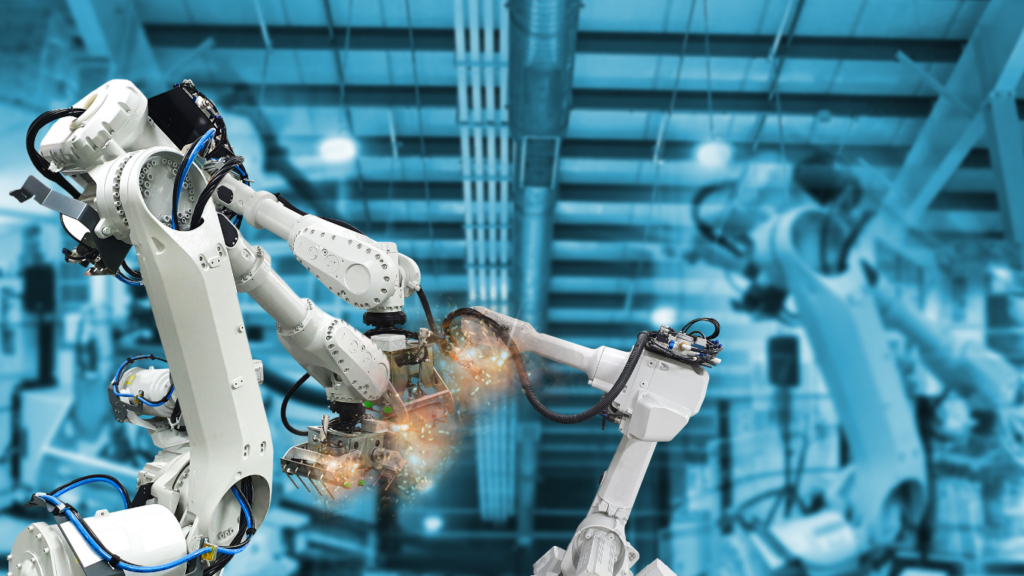
3. Sustainable Practices
Sustainability is a major focus for leading textile companies. They adopt eco-friendly cutting methods that minimize waste and reduce energy consumption. For instance, waterjet cutting uses a high-pressure stream of water to cut textiles, which is both efficient and environmentally friendly.
4. Customization and Flexibility
Innovative textile companies offer customization options to meet the specific needs of their clients. Advanced cutting technologies enable these companies to produce bespoke designs and tailor-made solutions. This flexibility is a significant advantage in a competitive market.
5. Integration of Smart Technologies
The integration of smart technologies, such as IoT and AI, has transformed textile cutting solutions. These technologies enable real-time monitoring and optimization of the cutting process, leading to increased efficiency and reduced downtime. Smart sensors can detect and correct errors, ensuring high-quality output.
6. High-Speed Cutting
Speed is a critical factor in textile production. Leading textile companies use high-speed cutting machines that can handle large volumes of fabric quickly and accurately. This capability is essential for meeting tight deadlines and maintaining a competitive edge.
7. Precision and Accuracy
Precision and accuracy are paramount in textile cutting. Innovative companies use advanced software and cutting tools to achieve precise cuts, reducing material waste and ensuring consistent quality. This attention to detail is what sets them apart from the competition.
8. Cost-Effective Solutions
By adopting advanced cutting technologies and automation, textile companies can reduce production costs. These cost savings can be passed on to customers, making high-quality textiles more affordable. Additionally, efficient cutting processes minimize waste, further reducing costs.
9. Enhanced Safety Measures
Safety is a top priority for leading textile companies. They implement advanced safety features in their cutting machines to protect workers and prevent accidents. For example, laser cutting machines are equipped with safety sensors that automatically shut down the machine if a hazard is detected.
10. Continuous Innovation
The most successful textile companies are those that continuously innovate. They invest in research and development to stay ahead of industry trends and adopt new technologies. This commitment to innovation ensures they remain leaders in textile-cutting solutions.
One such example of continuous innovation is the Svegea CMS 1800A2 Strip Cutter. This versatile machine is renowned for its precision in cutting various types of fabrics into strips, making it ideal for producing bias binding, piping, and other narrow fabric applications. The CMS 1800A2 Strip Cutter exemplifies the advanced cutting technologies and efficiency that set leading textile companies apart.
Innovation At Its Finest
Innovative textile companies are leading the way in textile-cutting solutions by embracing advanced technologies, sustainable practices, and continuous innovation. These companies set the standard for quality, efficiency, and customization in the textile industry. If you’re looking for cutting-edge textile solutions, consider exploring the products offered by Svegea of Sweden. Visit our product page to learn more about our innovative textile-cutting solutions.
The textile industry is no stranger to innovation. From early mechanization to today’s cutting-edge technologies, it has continually evolved to meet growing demands. In this era, automated textile machines are leading the charge with their state-of-the-art efficiency.
The Role of Automated Textile Machines
Automation has become a cornerstone of modern textile manufacturing, enabling greater precision and efficiency. Svegea’s automated systems, such as the Fully Automatic Roll Slitting Machine, exemplify how technology can optimize production while maintaining exceptional quality.
Efficiency at Its Core
Automated machines offer unmatched speed and precision. Svegea’s Roll Slitting Machine, for instance, transforms raw materials into finished rolls with minimal waste and maximum consistency. This efficiency helps manufacturers meet tight deadlines without compromising quality.
A Safer Workplace
Safety is critical in any manufacturing environment. Svegea incorporates advanced safety features into its machines, protecting operators and reducing risks. Intuitive controls and built-in safeguards ensure smooth, secure operations while minimizing downtime caused by accidents.
Automation: Transforming the Textile Landscape
1. Faster Production
Automation significantly accelerates production cycles. Machines like Svegea’s are designed to handle large volumes quickly and reliably, helping manufacturers keep pace with market demands.
2. Improved Quality
Automated systems incorporate sensors and monitoring technologies to ensure uniform results. Svegea’s machines deliver consistent, defect-free products, enhancing customer satisfaction and reducing rework.
3. Cost Efficiency
Although automation requires an initial investment, it reduces long-term expenses. Lower labor costs, minimized errors, and reduced material waste translate to significant savings for manufacturers.
4. Flexibility
Modern textile machines are highly adaptable. Svegea’s equipment can be tailored to produce various materials, enabling manufacturers to meet diverse client needs in a competitive market.
The Future of Textile Automation
1. Integration with IoT and AI
As the industry embraces smart manufacturing, technologies like the Internet of Things (IoT) and Artificial Intelligence (AI) will play a pivotal role. IoT-enabled devices can optimize workflows, while AI-driven analytics can predict maintenance needs, enhancing efficiency. Svegea is exploring these innovations to further enhance its product offerings.
2. Sustainability in Focus
Automated machines contribute to greener production by reducing energy use and waste. Svegea is committed to designing sustainable solutions that help manufacturers minimize their environmental impact.
3. Robotics and Advanced Automation
Robotic systems are increasingly performing complex tasks with remarkable accuracy. Svegea integrates robotics into its machines, pushing the boundaries of what textile automation can achieve.
Redefining Textile Automation
Automation is redefining textile manufacturing, driving efficiency, safety, and sustainability. Svegea’s innovative solutions empower manufacturers to stay ahead in an ever-evolving industry. As technology advances, Svegea remains dedicated to shaping the future of textile production.
For more information about Svegea’s solutions, reach out to us at info@svegea.se.
Driven by technological progression and the need for efficiency, the advanced apparel manufacturing industry has undergone significant transformations over the years. One of the most notable developments is the integration of automated processes and precision cutting techniques. These innovations have not only enhanced productivity but also improved the quality of garments produced. In this blog, we will explore the impact of these technologies and how they are shaping the future of apparel manufacturing.
The Rise of Automated Processes
Automation has become a cornerstone of modern apparel manufacturing. By incorporating advanced machinery and software, manufacturers can streamline various stages of production, from fabric cutting to sewing and assembly. Automated processes reduce the reliance on manual labor, minimize errors, and increase production speed.
One of the key benefits of automation is consistency. Machines can perform repetitive tasks with high precision, ensuring that each garment meets the same quality standards. This consistency is vital in large-scale production, where minor variations can lead to significant quality issues.
Moreover, automation allows for better resource management. By optimizing the use of materials and reducing waste, manufacturers can achieve cost savings and contribute to sustainability efforts. Integrating automated systems also enables real-time monitoring and data analysis, providing valuable insights for continuous improvement.
Precision Cutting Techniques
Precision cutting is a critical aspect of apparel manufacturing, as it directly impacts the fit and finish of garments. Traditional cutting methods often involve manual labor, which can be time-consuming and prone to errors. However, with the advent of precision cutting machines, manufacturers can achieve unparalleled accuracy and efficiency.
These machines utilize advanced technologies such as laser cutting, computer numerical control (CNC), and automated pattern recognition. Laser cutting, for instance, offers precise and clean cuts, even on intricate designs. CNC machines, on the other hand, can execute complex cutting patterns with high precision, ensuring minimal fabric wastage.
Automated pattern recognition systems further enhance precision by accurately identifying and aligning fabric patterns before cutting. This technology is particularly useful for patterned fabrics, where precise alignment is crucial to maintaining design integrity.
Svegea’s Roll/Slitting Machines: A Game Changer
Among the various precision cutting machines available, Svegea’s Roll/Slitting Machines stand out for their exceptional performance and versatility. These machines are designed to handle a wide range of materials, from delicate fabrics to heavy-duty textiles, making them ideal for diverse apparel manufacturing needs.
Svegea’s Roll/Slitting Machines are equipped with state-of-the-art sensors and smart controls, allowing them to adapt to different material thicknesses and cutting requirements in real time. This adaptability minimizes downtime and maximizes efficiency, making them a valuable asset for manufacturers aiming for operational excellence.
Integration with Industry 4.0
The integration of advanced apparel manufacturing machines with Industry 4.0 principles further enhances their capabilities. These machines are equipped with connectivity features and data analytics tools, enabling real-time insights and data-driven decision-making. This integration not only improves efficiency but also contributes to smarter and more sustainable manufacturing practices.
By leveraging data analytics, manufacturers can monitor machine performance, predict maintenance needs, and optimize production schedules. This proactive approach reduces downtime, extends the lifespan of machinery, and ensures consistent production quality.
Embracing Advanced Technologies
As the apparel manufacturing industry continues to evolve, embracing advanced technologies like automated processes and precision cutting techniques is essential for staying competitive. Svegea’s Roll/Slitting Machines exemplify the potential of these innovations, offering manufacturers the tools they need to achieve excellence.
If you’re looking to enhance your apparel manufacturing operations, consider integrating cutting-edge machines into your production line. Visit Svegea’s website to learn more about their innovative solutions and how they can help you achieve your manufacturing goals.
The garment industry, a cornerstone of global manufacturing, has faced numerous challenges and transformations over the years. Despite the rapid advancement of artificial intelligence (AI) and other cutting-edge technologies, garment manufacturing companies continues to thrive. This article explores how the industry adapts and prospers in the face of technological evolution.
Embracing Technological Advancements
The integration of AI and automation in garment manufacturing has revolutionized the industry. Technologies such as the Internet of Things (IoT), machine learning, and robotics have enhanced production efficiency and precision. AI-driven systems can predict fashion trends, optimize supply chains, and improve quality control. These advancements have allowed manufacturers to meet the growing demand for fast fashion while maintaining high standards of quality.
However, the garment industry has not fully automated its processes. The intricate tasks of cutting, sewing, and assembling garments still require human expertise. This blend of human skill and technological innovation has created a unique synergy, ensuring that the industry remains competitive and resilient.
The Human Touch in Garment Manufacturing
While AI and automation have streamlined many aspects of garment manufacturing, the human touch remains indispensable. Skilled artisans and workers bring creativity, precision, and adaptability to the production process. This human element is particularly crucial in high-end fashion, where bespoke tailoring and intricate designs demand a level of craftsmanship that machines cannot replicate.
Moreover, the collaboration between humans and machines has led to the emergence of Industry 5.0, where technology enhances human capabilities rather than replacing them. This approach fosters a more sustainable and efficient manufacturing process, benefiting both producers and consumers.
Sustainability and Ethical Practices
In recent years, there has been a growing emphasis on sustainability and ethical practices within the garment industry. Advanced technologies have played a significant role in this shift. For example, AI can optimize resource usage, reducing waste and minimizing the environmental impact of garment manufacturing. Additionally, blockchain technology is being used to ensure transparency and traceability in supply chains, promoting fair labor practices and ethical sourcing of materials.
These innovations have not only improved the industry’s sustainability but also enhanced its reputation among consumers who are increasingly conscious of the environmental and social impact of their purchases.
Adapting to Market Demands
The garment industry has shown remarkable adaptability in responding to changing market demands. The rise of e-commerce and the shift towards personalized fashion have driven manufacturers to adopt more flexible and responsive production methods. AI-powered tools enable manufacturers to analyze consumer preferences and tailor their offerings accordingly. This ability to quickly adapt to market trends has been a key factor in the industry’s continued success.
Furthermore, the COVID-19 pandemic accelerated the adoption of digital technologies in garment manufacturing. Virtual fitting rooms, 3D design software, and online collaboration tools have become essential in maintaining operations and meeting customer expectations during times of social distancing and lockdowns.
The Future of Garment Manufacturing
Looking ahead, the garment industry is poised to continue its evolution, leveraging AI and other advanced technologies to drive innovation and growth. The integration of smart textiles, wearable technology, and AI-driven design tools will further enhance the capabilities of garment manufacturers. These advancements will enable the creation of garments that are not only stylish but also functional, offering features such as temperature regulation and health monitoring.
Moreover, the ongoing development of sustainable materials and eco-friendly production methods will ensure that the industry remains aligned with global efforts to combat climate change and promote environmental stewardship.
Remarkable Resilience and Adaptability
The garment industry has demonstrated remarkable resilience and adaptability in the face of rapid technological advancements. By embracing AI and other cutting-edge technologies, while preserving the essential human touch, garment manufacturing continues to thrive. The industry’s commitment to sustainability, ethical practices, and responsiveness to market demands ensures its continued success in the ever-evolving landscape of global manufacturing.
As a testament to the industry’s innovative spirit, companies like Svegea of Sweden are providing state-of-the-art textile machinery that enhances production efficiency and quality. These advancements support garment manufacturers in their quest to stay competitive and meet the demands of a dynamic market.
Discover the future of garment manufacturing with innovative solutions from Svegea of Sweden. Enhance your production efficiency and quality today. Talk to us to learn more!
In the ever-evolving tapestry of the textile industry, staying ahead of the curve isn’t just smart—it’s essential. As we thread our way through 2024, let’s unravel the spool of future trends in textile manufacturing that are stitching a new narrative for fabric production.
Smart Textiles: The Brainy Fibers
Imagine a world where your clothes adjust to your body temperature, track your health stats, or even change color to match your mood. No, it’s not science fiction; it’s the magic of smart textiles. These brainy fibers integrate advanced materials to bring intelligence to our wardrobes. It’s like having a personal assistant woven into your jeans!
3D Technologies: Tailoring a New Reality
Gone are the days of one-size-fits-all. With 3D technologies in fashion, custom-fit clothing is becoming the norm, not the exception. This trend is not just about looking good; it’s about precision, efficiency, and reducing waste. So, if you’re tired of clothes that just don’t fit right, the future looks tailor-made for you.
Sustainable Supply Chains: Green Is the New Black
As the industry spins toward sustainability, sustainable supply chains are becoming as crucial as fashion. It’s about creating a cycle of production that respects the planet as much as it does profit. After all, what’s the point of looking good if we don’t have a planet to look good on?
Customization and Personalization: The ‘You’ in Your Clothes
In a world where everyone wants to stand out, customization is king. The future of textiles is personal, with bespoke designs and personalized experiences becoming the new standard. It’s time to wear your personality on your sleeve—literally.
AI and Data Analytics: The Style Algorithm
Data is the new thread in textile manufacturing, with AI and data analytics weaving patterns of efficiency and innovation. These technologies are not just about crunching numbers; they’re about creating fabrics that are smarter, more responsive, and, dare we say, more fashionable.
Engaging the Right Partner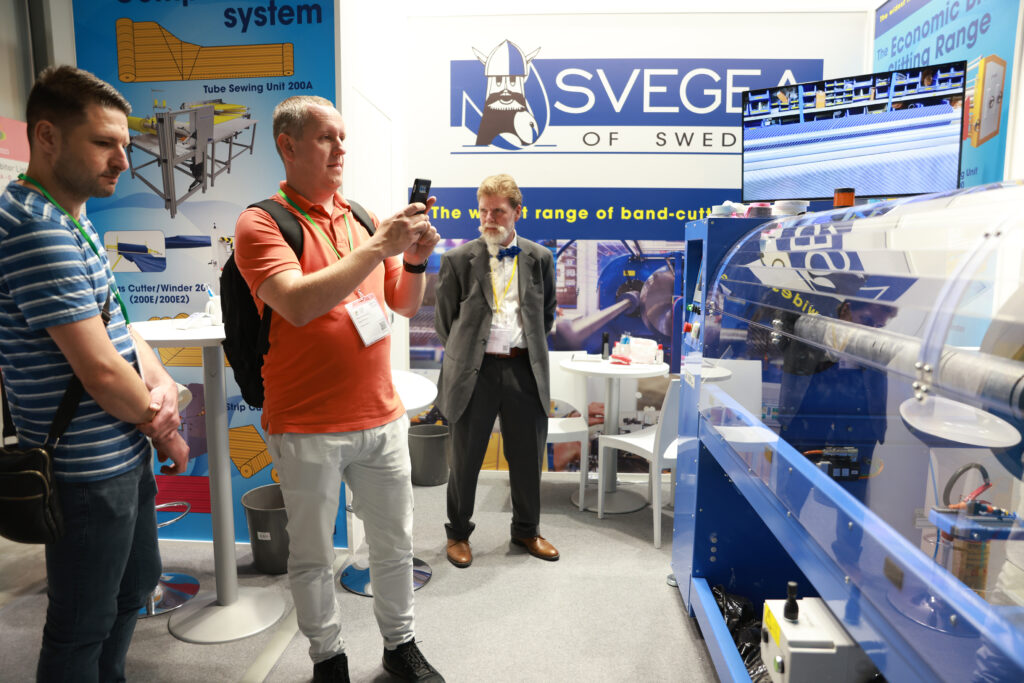
As we embrace these future trends, it’s clear that the right partner can make all the difference. Engage the services of a textile manufacturing company that’s not just keeping up with these trends but is at the forefront of the textile revolution. You want to be in good company. Whether it’s smart textiles or sustainable practices, Svegea is the go-to for any manufacturing needs to cope with the future trends in textiles.
It’s an exciting time to be in the industry, and with companies like Svegea of Sweden leading the charge, the future is not just bright; it’s brilliant. For more insights into these trends, check out the full reports from StartUs Insights and GreyB. And remember, when it comes to the future of textiles, don’t just follow the trends—wear them.
In manufacturing optimization, Svegea’s roll-slitting machines stand out as pioneers, integrating precision and speed to redefine production standards. These advanced machines cater to diverse industries, from textiles to packaging, offering sustainable solutions that maximize output while minimizing waste. Let’s explore how Svegea’s technology contributes to efficient material utilization and supports sustainable manufacturing practices.
Enhancing Efficiency Through Innovation
Svegea’s roll-slitting machines address the inefficiencies of traditional cutting methods by optimizing material usage. Unlike conventional processes that often result in significant leftover materials, Svegea ensures each roll is fully utilized, reducing costs and environmental impact. This commitment to efficiency boosts productivity and supports sustainable production practices.
Seamless Integration and Versatility
One of the key strengths of Svegea’s machines lies in their seamless integration into existing production workflows. Their user-friendly interfaces and intuitive designs empower operators to manage and control operations effortlessly. This versatility allows manufacturers to handle a wide range of materials with precision, adapting swiftly to varying production demands.
Precision and Quality Assurance
Precision is paramount in manufacturing, and Svegea’s roll-slitting machines excel in delivering consistent and accurate cuts. Advanced technology ensures that each slit meets stringent quality standards, minimizing errors and enhancing overall product quality. This precision not only reduces rework but also enhances operational efficiency, making these machines indispensable in high-demand industries.
Contributing to Sustainable Practices
Central to Svegea’s innovation is its commitment to sustainable manufacturing. By minimizing material waste through efficient roll-slitting technology, these machines play a crucial role in reducing environmental footprint. Optimal material utilization not only lowers raw material consumption but also supports eco-friendly production processes, aligning with global sustainability goals.
Shaping the Future of Manufacturing
Looking ahead, Svegea’s roll-slitting machines continue to set benchmarks for efficient and sustainable manufacturing practices. Their ability to maximize output while minimizing waste underscores a paradigm shift towards more responsible industrial practices. As industries evolve towards greater efficiency and environmental consciousness, Svegea remains at the forefront of driving innovation and shaping the future of manufacturing worldwide.
Harnessing the Power of Roll/Slitting Machines
By harnessing the capabilities of Svegea’s Roll/Slitting Machines, industries can achieve significant improvements in production efficiency and sustainability. These machines not only optimize material utilization but also pave the way for a more environmentally conscious approach to manufacturing. Embracing such technology not only benefits businesses economically but also contributes positively to global environmental efforts.
The textile industry is undergoing transformative changes driven by trends around sustainability, automation, customization, and circularity. Leading machinery manufacturers offer cutting-edge solutions to help textile producers capitalize on these powerful market shifts.
Sustainability Imperative
Environmental consciousness is fueling the demand for eco-friendly textiles, currently, a global textile trend that we cannot ignore. Innovative machinery enables sustainable manufacturing practices like energy efficiency and waste reduction, minimizing environmental impact while maintaining competitive operations.
Automation & Industry 4.0
Principles like robotics, AI, and IoT are optimizing production through automation. Advanced textile machinery seamlessly integrates these technologies to streamline operations, boost productivity, and reduce costs – keeping manufacturers at the forefront of the digital revolution.
Customization & Diversification
Evolving consumer tastes favor personalized products and unique experiences. Flexible machinery allows for customized, diverse offerings tailored to changing market demands.
Circular Economy Transition
Resource efficiency is paramount, with textile circularity reducing waste. Circular knitting machines and recycling technologies enable closed-loop supply chains by repurposing waste into new materials.
As these trends reshape the global landscape, machinery manufacturers position textile producers for success. By adopting innovative solutions for sustainability, automation, customization, and circularity, industry leaders can drive sustainable growth and gain a lasting competitive edge.
For inquiries, brochures, or further information about Svegea of Sweden’s cutting-edge textile machinery, visit our contact page.
- 1
- 2




